- Books Name
- Social Science Book
- Publication
- Cognizance Publication
- Course
- CBSE Class 7
- Subject
- Social Science
Art and Culture
Crafts in Towns
The craft persons of Bidar were so famed for their inlay work in copper and silver that it came to be called Bidri. The Panchlas or Vishwakarma community, consisting of goldsmiths, bronzesmiths, blacksmiths, masons and carpenters, were essential to the building of temples.They played an important role in the construction of palaces, big buildings, tanks and reservoirs.Saliyar and Kaikkolars emerged as prosperous communities, making donation to temples. Aspects of cloth making like cotton cleaning, spinning and dyeing become specialised and independent crafts.Some towns like Ahmedabad (Gujarat) went on to become major commercial sites, but other, like Thanjavur, shrank in size and importance.
over the centuries. Murshidabad in West Bengal on the banks of Bhagirathi, which rose to prominence as a centre for silk and became the capital of Bengal in 1704 declined the course of century as the weavers face competition from cheap mill-made cloth from England.
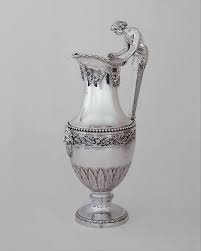
over the centuries. Murshidabad in West Bengal on the banks of Bhagirathi, which rose to prominence as a centre for silk and became the capital of Bengal in 1704 declined the course of century as the weavers face competition from cheap mill-made cloth from England.
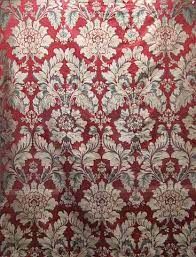
Kabul
With its rugged, mountainous landscape Kabul(in present Afghanistan) became politically and commercially important from the 16th century onwards. Kabul and Qandhar were linked to the celebrated silk route.Beside trade in horses, was primarily carried on through this route. In the 17th centuryJean Baptiste Tavernier, diamond merchant, estimated that the horse trade at Kabul amounted to ₹30,000 annually, which has a huge sum in those days. Camels carried dried foods, dates carpet, silk and even fresh fruit from Kabul to the subcontinent.Slaves were also brought here for sale.
Architectural splendour of Hampi
Hampi is located in the Krishna Tungabhadra basin, which formed the nucleus of Vijayanagara empire, founded in 1336. It is a well fortified city.No mortar or cementing agent was used in the construction of these walls and the techniques followed was to wedge them together by interlocking. The buildings in the royal complex had splendid arches, domesand pillared halls with niches for holdingsculptures.Hampi was a busy place with commercial and cultural activities.Moors (muslim merchants), Chettis and agents of European traders such as the Portuguese thronged the markets of Hampi.
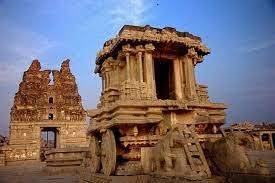
Temples were the hub of cultural activities and Devdasis (temple dancers) performed before the deity, royalty and masses in the many pillars halls in the Virupaksha(form of Shiva) temple.
The Mahanavmi festival, now known as Navratri, was one of the most important festival celebrated at Hampi.King's also participated in the Mahanavmi festival and receive guests and accept attribute from subordinate chief. Hampi fell into ruin following the defeat of VijayNagar in 1565 by the Decanni Sultans- the rulers of Golconda, Bijapur, Ahmednagar, Birar and Bidar.
During their rule, the Vijayanagar rulers took keen interest in building tanks and canals.The Anantraj Sagar tank was built with a 1.37 km long earthern dam across the Maldevi River.Krishnadeva Raya built a huge stone embankment between 2 hills to create a massive lake near Vijaynagar from which water was carried through aqueducts and channels to irrigate fields and gardens.
Gateway to the West Surat
Surat (Gujarat) was the emporium of Western trade during the Mughal period, along with Cambay(Khambhat) andlater Ahmedabad. Surat was the gateway for trade with West Asia via the Gulf of Ormuz.Surat has also been called the gate to Mecca because many pilgrims ships set sail from here.In the Surat city, there was cosmopolitan culture and people of all caste and creed lived there.In 17th century there were many factories and warehouses at Surat. On an average 100 ship of different countries could be found anchored at the port at anytime.In Surat there were several retail and wholesale shops selling cotton textiles. The textiles of Surat were famous for its gold lace borders (zari) and had a market in West Asia, Africa and Europe.There were rest houses, magnificent buildings and innumerable pleasure parks.The Kathiyawadi seths or Mahajans(money changers) had huge banking houses at Surat.It is noteworthy that the Surat hundis were honoured in the far-off markets of Cairo in Egypt, Basra in Iraq and Antwerp in Belgium.
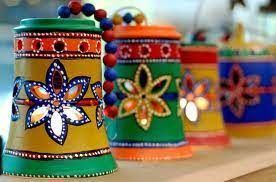
Surat began to decline towards the end of 17th century.This was because of following factors:loss of market and productivity because of the decline of Mughal Empire, control of the sea roots by the Portuguese and competition from Bombay where the English East India Company shifted its headquarters in 1668. Nowadays, Surat is a bustling commercial centre.
Fishing in troubled water Masulipatnam
The town of Masulipatnam, or Machilipatnam(fish port town)layon the delta of the Krishna river.The Fort at Masulipatnam was built by the Dutch.Both the Dutch and English East India Companies attempted to control Masulipatnam as it became the most important port on the Andhra coast. The competition among various trading groupstheGolconda nobles, Persian merchants, TeluguKomati Chettis and European traders made the city prosperous.
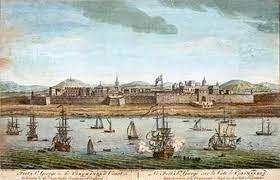
The Qutb Shahi rulers of Golconda imposed royal monopolies on the sale of textiles, spices and other items to prevent that trade passing completely into the hands of various East Indian companies.In 1686-1687 Mughal emperor Aurangzeb annexed Golkonda.This cause the European companies to look for alternatives.As the company traders move to Bombay, Calcutta and Madras, Masulipatnam lost both its merchants and prosperity and decline in the course of the 18th century, being todaynothing more than a dilapidated little town.
New towns and traders
In the 16th and 17th centuries, European countries were searching for spices and textiles which had become popular both in Europe and West Asia.The English, Dutch and French formed East Indian companies in order to expand their commercial activities in the east.Great Indian rulers like Mulla Abdul Gafur and Virji Vora, who owned a large number of ships completed with them. The European companies use their navel power to gain control of the sea trade and forced Indian traders to work as there agents.
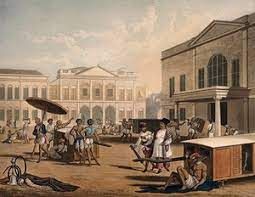
So the English emerged as the most successful commercial and political power in the subcontinent. Indian textile designs became increasingly refined.However, this period saw the decline of independence of craft persons.
They now have began to work on a system of advances, which meant that they had to weave cloth which was already promised to European agents.Weavershad no longer the liberty to sell their own clothes or weaving their own patterns. They had to reproduce the designs supplied to them by the company agents.The 18th century saw the rise of Bombay, Calcutta and Madras, which are nodal cities today. Artisansand Merchants were moved into the black towns established by the European companies within these new cities. The ‘blacks’ or native traders and craft persons were confined here while the ‘white rulers’ occupied the superior residencies of Fort St. George in Madras or Fort St. William in Calcutta.
Vasco da Gama
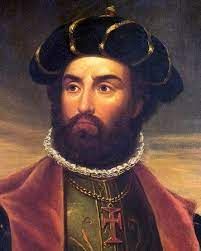
In the 15th century, European sailors undertook unprecedented exploration of sea roots. They are driven by the desire to find ways reaching to the Indian subcontinent and obtaining spices. Vasco da Gama, a portuguese sailor sail down the African coast, went round the Cape of Good Hope and crossed over to the Indian Ocean. His journey took more than a year, he reached Calicut in 1498 and return to Lisbon, the capital of Portugal the next year.In spite of the obvious hazards, the routes that were opened up proved to be extremely profitable, and he was followed by English, Dutch and Frenchsailors.

 Cognizance Publication
Cognizance Publication
